Upgrade Your Computer to Windows 10: Complete Guide


Intro
Upgrading to Windows 10 represents a pivotal step in enhancing a computer’s usability and security. With the shift from older versions of Windows, notably Windows 7 and 8, users are faced with a modern interface and an array of features that foster better productivity and connectivity.
In this guide, we’ll explore various aspects of upgrading to Windows 10, starting from preparing your current system to the specifics of installation and configuration. Whether you’re well-versed in tech or just keen on improving your digital experience, this article is tailored to offer insightful details that empower your journey.
Throughout the guide, we’ll touch on key elements such as compatibility checks, essential backup processes, as well as troubleshooting methodologies that might come in handy during and after the migration. With a focus on practical approaches, let’s delve into the specifics that make upgrading to Windows 10 both accessible and efficient.
The transition doesn’t have to be daunting; instead, with the right insights and preparations, it can become a seamless upgrade that breathes new life into your computer.
Understanding Windows
In the landscape of personal computing, knowing the ins and outs of operating systems is crucial for both IT professionals and tech enthusiasts. Understanding Windows 10 becomes a vital part of this journey, especially as users consider upgrades or new installations. Not only does Windows 10 represent a significant evolution in terms of features, but it also brings about a host of changes that can affect productivity and system performance.
The enhancements found in Windows 10 aim to create a more user-friendly and efficient environment. With a blend of familiar elements from previous versions and innovative functionalities, Windows 10 serves both seasoned users and newcomers alike. This article intends to guide you through these intricacies, illuminating the why and how of the operating system's offerings.
Prologue to Windows Features
Windows 10 does not skimp on features; it provides many options designed to improve user experience and productivity. Some highlights include:
- Start Menu Revival: A long-missed element from Windows 7, the start menu is back with a modern twist. The combination of live tiles and traditional desktop links allows for a personalized touch.
- Virtual Desktops: This feature lets users create multiple desktops, making it easier to manage several projects simultaneously without clutter.
- Action Center: A centralized hub for notifications and quick access to settings is now available, making it easier for users to manage alerts in a timely manner.
- Cortana Integration: Cortana, Microsoft's intelligent assistant, is embedded right into the system, streamlining tasks and helping users to navigate through queries hands-free.
- Microsoft Edge: The transition from Internet Explorer to Edge focuses on performance and security, ensuring a smoother browsing experience.
These features signify more than just eye candy; they're designed to optimize workflow and enhance efficiency. For IT professionals, familiarity with these characteristics enables you to make informed recommendations and solve user queries with ease.
Differences Between Windows and Previous Versions
Many users may question, "What's all the fuss about Windows 10?" This question deserves a detailed answer, especially for those familiar with older iterations such as Windows 7 or 8. Here are some pivotal differences:
- User Interface: While Windows 8's reliance on tiles was novel, it confused many users. Windows 10 returns to a more traditional layout while incorporating tile functionality. Familiarity promotes smoother transitions for users.
- Security Enhancements: Windows 10 prioritizes built-in security features, including Windows Defender, which combines antivirus, anti-malware, and firewall protections all in one.
- Update Management: Unlike Windows 7's optional updates, Windows 10 employs a more aggressive update policy, ensuring users have the latest features and security patches. This shift can be advantageous but also concerning for those who prefer control over their updates.
- Gaming Features: Windows 10 incorporates direct integration with Xbox, providing features such as game streaming and an improved experience for gamers.
By understanding these differences, users can not only appreciate the benefits of upgrading to Windows 10 but also prepare for the adjustments they need to make. As the digital landscape continues to evolve, adapting to these changes will become essential for maintaining efficiency and security in your computing environment.
"Adapting to new technology is not just about learning to use it, but understanding the fundamental changes it brings to our workflow and life."
In summary, grasping the essence of Windows 10 aids in a smoother transition and optimal use of your computer resources.
Preparing Your System for Upgrade
Upgrading your computer to Windows 10 isn’t just about hitting the install button and waiting for progress bars to fill up. Proper preparation can save a world of headache down the line. The crux of this stage is to ensure that your hardware is ready for the demands of Windows 10, and that your important files are safeguarded. With the right groundwork laid out, the upgrade process can be smooth and worry-free.
System Requirements for Windows
Before diving into the upgrade, understanding the system requirements necessary for Windows 10 is crucial. Microsoft has laid out these specifications to ensure that all users have a consistent experience, which means that meeting or exceeding these requirements is non-negotiable.
Key Specifications:
- Processor: 1 GHz or faster with at least one core on a compatible 64-bit processor
- RAM: Minimum of 2 GB, though 4 GB or more is preferable for better performance
- Storage: At least 20 GB of free space required for the installation
- Graphics: A DirectX 9 compatible graphics card with a WDDM driver
- Display: A screen size of 800 x 600 or higher
Not checking these requirements could leave you in a jam. If your system doesn’t meet these benchmarks, expect sluggish performance or perhaps even installation failures. A good rule of thumb here is, when in doubt, overcompensate; if you have a chance to uprade your hardware, it may save you upgrades in the future.
Checking Compatibility
Ensuring your system is compatible with Windows 10 goes beyond just hardware specifications. This step helps identify any potential issues before they spiral into larger problems during installation.
Using Microsoft's Compatibility Tool
The Windows 10 Compatibility Tool, or the Get Windows 10 app, is specifically designed to assess whether your current setup is ready for the jump to Windows 10. This tool scans your hardware and software, ultimately delivering a diagnosis.
"Compatibility checks may save you significant time, money, and stress by preventing issues before they arise."
The key characteristic of this tool lies in its simplicity and accessibility; anyone can use it without deep technical knowledge. The main advantage is its ability to flag potential issues with hardware or software that might not be instantly apparent. However, it can be limited; for instance, it may not account for all peripherals like printers or older software versions, so always have a backup plan ready.
Assessing Hardware Specifications
While the Microsoft compatibility tool does a great job, diving deep into your hardware specifications adds another layer of assurance. By assessing your hardware manually, you can pinpoint any weak links that could derail the upgrade.
Common specifications to evaluate include:
- Memory: Checking the RAM and ensuring there’s enough free space to comfortably run Windows 10
- Processor: Verifying whether your CPU meets the required frequency and cores
- Graphics: Ensuring that your graphics card can support the visual requirements of Windows 10
This method allows for a more comprehensive view of your current setup. One unique advantage is that by identifying potential upgrades now, you can gather the necessary parts beforehand, which can be a game changer. However, it may require some level of technical know-how, which can deter some users.
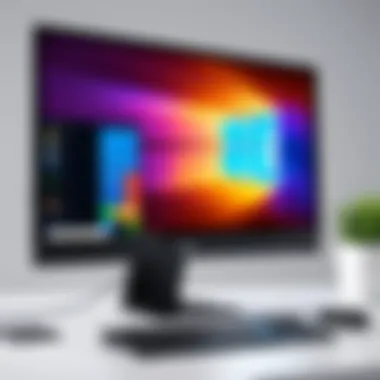

Backing Up Your Data
Now that you’ve determined that your system is capable of running Windows 10, it’s time to prepare for one of the most crucial steps: backing up your data. Any upgrade carries with it the risk of data loss or corruption, and this is the stage where caution really pays off.
Creating a System Restore Point
Creating a system restore point acts as an insurance policy. This feature allows you to revert your system to this previously saved state if anything goes sideways during the upgrade.
The brilliance of a restore point lies in its simplicity; it captures essential information and system files, creating a safety net for your computer. The real advantage here is the peace of mind knowing that you can roll back to a stable state if needed.
Utilizing External Backup Solutions
While restore points are helpful, they aren't a catch-all solution. Utilizing external backup solutions such as external hard drives or cloud storage services provides an additional layer of security.
Some contributing factors to note:
- Flexibility: Cloud services like Google Drive or OneDrive allow backups of not just files but also folders and full drives.
- Accessibility: Storing important documents on an external device means they’re readily available despite changes in your operating system.
- Limitations: Relying solely on a single method—like only a restore point or just cloud storage—can be unsafe. Diversifying your data retention strategies is the safest route.
Acquiring Windows
Acquiring Windows 10 is a critical step for anyone looking to ensure their system runs smoothly and efficiently. This phase not only involves obtaining the operating system but also understanding the essentials that come with it. Investing in a genuine license means you have access to updates, security features, and support from Microsoft, making it a wise choice for both individuals and businesses.
Given the vast array of purchasing options available, it’s important to navigate these choices smartly. Whether it’s through digital purchase or physical copies, being informed helps you to maximize the benefits of your investment. Plus, keeping your operating system up to date is paramount in this digital age.
Purchasing Windows
When it comes to getting your Windows 10 license, opting for an official source is paramount. This not only guarantees you’re getting a legitimate product but also ensures that you’ll have access to future updates and security patches. Always consider the specific edition you need. Windows 10 offers versions like Home or Pro, which cater to different user requirements. For instance, if you're just using the computer for personal tasks, the Home edition often suffices.
Moreover, there are multiple channels available for purchase, such as the Microsoft Store and authorized retailers. It’s also wise to watch for discounts or special offers which can pop up throughout the year, especially during sales events.
Downloading Windows Installation Media
Once the license is squared away, the next step involves downloading the installation media for Windows 10. This process is straightforward but does require a bit of know-how to ensure it’s done correctly.
Using the Media Creation Tool
One popular method for obtaining Windows 10 is by utilizing the Media Creation Tool. This tool simplifies the process and offers flexibility in how you want to install Windows 10. With just a few steps, users can create either a USB drive or download an ISO file for installation.
One standout feature of the Media Creation Tool is its ability to help you create an installation media directly to a USB drive or burn it onto a DVD. This method is particularly beneficial for users who might not have a reliable internet connection or those looking to perform a clean install in multiple systems without repeated downloads.
While it is generally user-friendly, some users may encounter compatibility issues depending on their current operating system. However, the benefits of having the correct installation media readily available cannot be understated, especially when it comes to rebooting systems.
Creating a Bootable USB Drive
Creating a bootable USB drive is another method that closely ties in with the Media Creation Tool. This approach serves as an effective way to ensure your clean installation goes off without a hitch. The utility streamlines the process, creating a bootable device that can be used for direct installations.
This method is frequently favored due to its portability and ease of use. Unlike DVDs, USB drives are less prone to physical damage and often feature faster write and read speeds. The advantage here is that you can carry your installation media with you – making it easier to upgrade or install Windows on multiple systems.
Nonetheless, it's key to ensure that your USB drive is adequately prepared, formatted, and meets the requirements for installation, as improperly prepared drives can lead to frustrating errors during setup.
Remember, having the correct tools and media makes the upgrade process smoother and more efficient, minimizing the risks associated with installation failures.
Ultimately, acquiring Windows 10 involves not just obtaining a license but ensuring that you have the proper tools to install and enjoy all the features it has to offer.
Executing the Upgrade Process
Executing the upgrade process is a significant milestone in transitioning to Windows 10. This phase not only involves the technical steps required to install the new operating system but also encompasses various considerations that can greatly influence the overall success of the upgrade. The process is built upon a foundation of ensuring that both hardware and software are in harmony with the new OS. Ensuring a smooth upgrade is crucial because a well-executed installation can minimize downtime and enhance productivity, whereas missteps can lead to frustration and technical complications.
Initiating the Upgrade Installation
Starting the upgrade installation is an essential first step in ensuring that Windows 10 is added smoothly to your existing system. The process typically involves launching the installation media, whether it’s on a USB drive or through online downloads, and following the prompts provided by the installation wizard. A key part of this phase is to follow instructions meticulously to avoid any missteps that could delay or complicate your upgrade experience.
It’s also advisable to have your product key handy, as it may be required during the installation process. By properly initiating the setup, you're paving a clear path toward enjoying the new features and higher efficiency of Windows 10. Taking a careful look at any preferences offered during the installation phase is also crucial for customizing your experience.
Choosing Upgrade Options
When reaching the decision point in the installation process, you'll be presented with various upgrade options. This choice can affect how your files and applications are handled, making it a pivotal moment in the upgrade journey.
Upgrade vs. Clean Installation
The decision between an upgrade versus a clean installation is one of the most pivotal choices in the upgrade process. An upgrade allows you to keep your existing files, programs, and settings, facilitating a seamless transition to Windows 10. This option is beneficial for those who want to maintain their current workflow and application setup.
However, a clean installation clears all data from your hard drive, providing a fresh start that can lead to optimal performance. This process is commonly favored to eliminate any residual issues from previous OS versions. It’s a beneficial choice if your computer has been sluggish or cluttered over time.
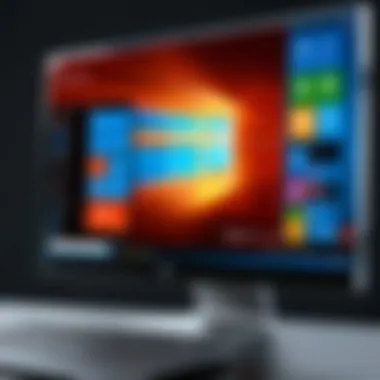
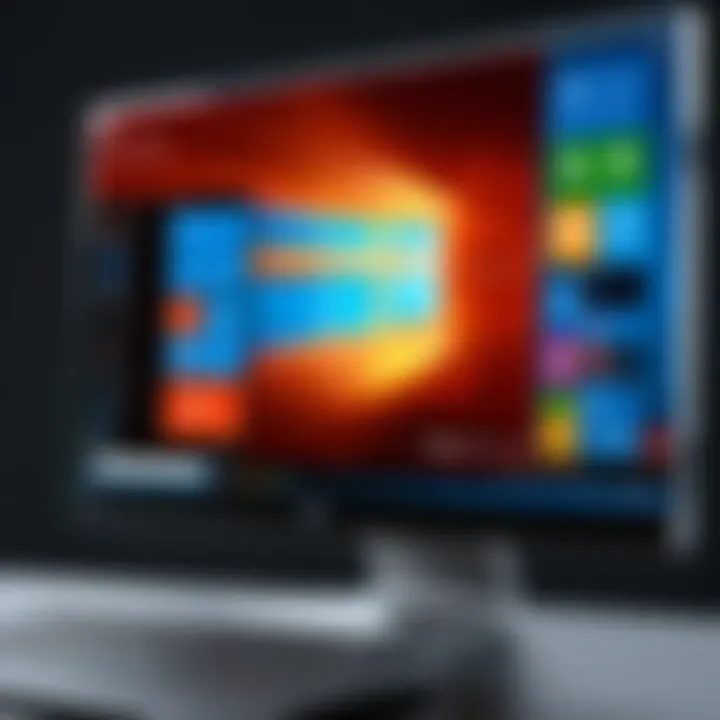
The unique feature of a clean installation lies in its ability to remove pre-existing problems as well as old software conflicts, potentially leading to a more stable system as a result.
Preserving Files and Applications
Preserving files and applications during the upgrade process is another essential aspect that warrants attention. This approach allows users to retain their personal documents, photos, music, and installed applications while moving to Windows 10. It's advantageous for those who might not have the time to reinstall software or spend hours backing up data. In many cases, the system will carry over user files and settings to the new OS, making the transition relatively painless.
However, it's important to note that while many applications are preserved, some may not function properly if they are outdated or not compatible with Windows 10. This aspect can make the process seem appealing, but it's essential to remain vigilant about checking software compatibility ahead of the upgrade.
Remember: Always prepare by backing up important files regardless of the chosen upgrade option. Unexpected issues can arise, and having a backup ensures you won't lose vital data during the transition.
The execution of these upgrade options signifies the culmination of preparation, checking compatibility, and making informed choices about how to proceed with the installation of Windows 10. Each step reflects a commitment to enhancing the system and optimizing user experience.
Troubleshooting Common Upgrade Issues
When you set out to upgrade your system to Windows 10, it's not all rainbows and butterflies. Issues pop up more often than you might think. Troubleshooting common upgrade issues is crucial in ensuring a smooth transition, especially for those who might not be well-versed in the technical side of things. Identifying problems early not only saves time but can also prevent critical data loss.
Operating systems are tricky beasts. They require harmony between hardware and software, and sometimes they just don't get along. By understanding the most frequent issues that arise, users can react swiftly to solve them. This section focuses on equipping readers with the tools necessary to diagnose and rectify problems, saving a lot of frustration along the way.
Addressing Installation Failures
Error Codes and Their Solutions
When you see an error code plastered across your screen during installation, it can feel like a slap in the face. Each code typically corresponds to a specific problem, which can help pin down the issue. For instance, a code such as 0xC1900101 points to hardware incompatibility, likely a device driver that hasn’t kept pace with the software updates.
These details are propelling forces in solving such problems. With a treasure trove of documentation surrounding Windows 10, you'll find feasible solutions. Websites like Microsoft's official support create a bridge between confusion and clarity, showing you exactly how to navigate these codes. It’s worth the time to look up these codes because many of them lead straight to effective fixes. The notable aspect here is that these codes help you zero in on what needs addressing, separating the wheat from the chaff in your upgrade journey.
The unique selling point is the immediacy of response; when you know the error, you can remediate it in real time instead of groping around in the dark. Just remember though, research will require some patient digging.
Revisiting Compatibility Checks
Sometimes, users might feel like checking compatibility is a box to tick off, but let’s face it: it’s more than that. If you’ve encountered issues during your upgrade, it might be time to circle back and revisit those compatibility checks.
The key takeaway here is that hardware evolves rapidly, and what was compatible yesterday might not be today. This is particularly true when it comes to graphics cards or processors. Running the compatibility tool again can help identify parts of your system that may be lagging behind or even outright incompatible with Windows 10.
One key feature of this approach is its iterative nature; it encourages ongoing assessment rather than a one-time evaluation. It ensures that you're not left high and dry when you realize your old printer isn't playing nicely with the new operating system. If a piece of hardware doesn’t measure up, that’s valuable info to know ahead of time. The disadvantage? It can be a bit of a drag, especially if you’ve already sunk time into the upgrade process. But the clarity you gain is worth every minute.
Dealing with Driver Problems
Another thorn in the side of upgrading is driver issues. Often, when you've upgraded, the drivers required to run your peripherals may not be fully compatible yet. This can lead to all kinds of headaches: your mouse may glitch, or you might notice that your sound quality has dropped.
To solve these dilemmas, the best practice is proactively checking for driver updates before you begin the upgrade. Many manufacturers release Windows 10-friendly versions of their drivers. It’s a bit of legwork upfront, but it can save a lot of time and stress later on. After the upgrade, it’s smart to double-check that all drivers are installed correctly; sometimes all that’s needed is a reinstallation to get them dialed in.
"As you wrestle with these challenges, remember, that a little patience often goes a long way."
Troubleshooting these common upgrade issues not only sharpens your technical skillset but also prevents unnecessary barriers that can stifle productivity in the long run.
Post-Upgrade Configurations
Once you've successfully transitioned your computer to Windows 10, the real fun begins. Post-upgrade configurations are essential for ensuring that your system runs smoothly and aligns with your personal or professional needs. This stage includes a range of adjustments, from privacy settings to software installations, which play a crucial role in maximizing the system's potential and user experience. In this part of the guide, we will explore the various configurations you should consider and how they can enhance your interaction with Windows 10.
Configuring Privacy Settings
Privacy is a hot topic these days, especially with the increasing concern over data security. After the upgrade, it's wise to take a moment and dive into the privacy settings offered by Windows 10.
Key Characteristics of Privacy Settings
Windows 10 provides a comprehensive suite of privacy options that can be tailored to your preferences. You'll encounter settings related to location tracking, diagnostics and feedback, and personalized advertising, among others. These options give users control over what personal data is shared with Microsoft, ensuring that only the necessary information is collected.
By taking the time to navigate through these settings, individuals can create an environment that suits their comfort levels. For instance, individuals who are particularly cautious about sharing their location can easily disable that feature, providing peace of mind.
Personalizing Your User Experience
When you’ve upgraded your system, personalization is what turns a standard Windows 10 experience into something uniquely yours. By customizing various elements, you can tailor the operating system to fit your style and workflow.
Setting Up User Accounts
Creating user accounts can be a game-changer, particularly if multiple people are using the same device. This feature allows for tailored experiences, from distinct wallpapers to personalized settings.
Key Characteristic
User accounts can be set up as either local accounts or Microsoft accounts. Local accounts are straightforward and require only a username and password, while Microsoft accounts bring in added features such as cloud storage through OneDrive.
Advantages of User Accounts
- Privacy: Each user has their own space, minimizing clutter and ensuring privacy.
- Customization: Unique settings can greatly enhance the user interaction with the system.
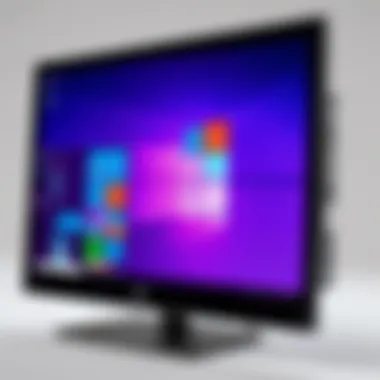
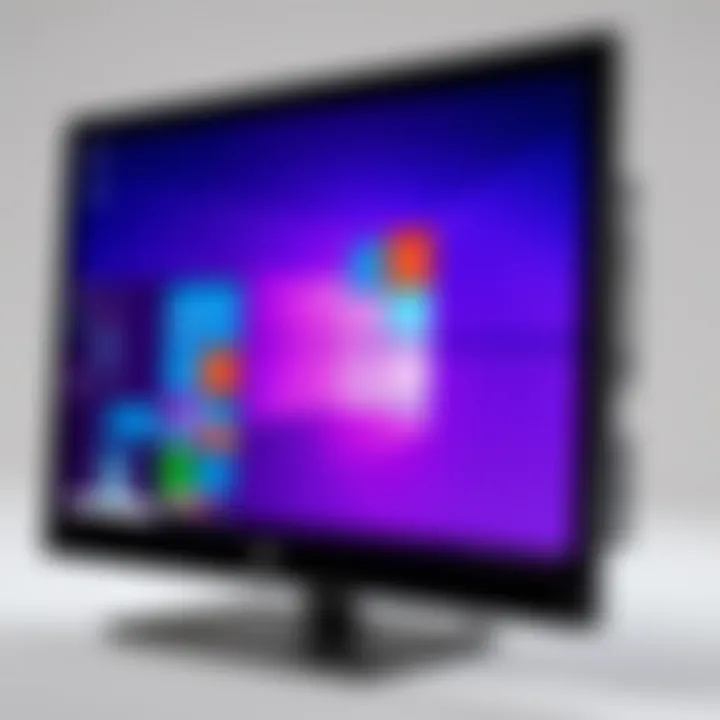
However, it's worth noting that local accounts may lack some features that come with a Microsoft account, including syncing settings and accessing the Windows Store.
Customizing Desktop and Taskbar
Now, let’s shift gears and talk about setting up your desktop and taskbar. The first impression is often through visuals, and an organized computer can make a world of difference.
Unique Feature
Windows 10 allows extensive customization, from changing the background image to pinning frequently used apps on the taskbar. This makes it easier to access essential tools without sifting through menus.
Advantages of Customizing Desktop and Taskbar
- Accessibility: Having your most-used applications readily available saves time.
- Aesthetic Appeal: A tailored desktop can create a pleasant working environment.
As with any feature, there can be disadvantages if not managed properly—too many icons can make your workspace cluttered and overwhelming.
Installing Essential Software and Drivers
Finally, after setting up your privacy and personalizing your environment, it’s time to install essential software and drivers. Windows 10 generally does a solid job of auto-installing needed drivers, but it’s still prudent to check if any crucial software or driver updates are necessary.
Key Aspect of Software Installation
From antivirus programs to productivity suites, having the right software can optimize your system’s performance. This ensures that your upgraded Windows 10 is not just a pretty interface but a powerhouse of functionality.
- Drivers: These are key for hardware components like printers and graphics cards, keeping everything running smoothly.
- Essential Software: Think of tools like Microsoft Office, web browsers, or any graphic design software you commonly use.
Evaluating System Performance
Evaluating system performance after upgrading to Windows 10 is crucial for both IT professionals and tech enthusiasts. This process helps understand how well the new operating system runs on your hardware. Just like tuning an engine, proper evaluation helps reap the benefits of improved efficiency and responsiveness. If tuning is neglected, users might find themselves facing sluggishness or crashes down the line. Performance benchmarks and optimizations become essential in ensuring that the upgraded system truly enhances the user experience, rather than just marking a box on the upgrade checklist.
Running Performance Benchmarks
Performance benchmarks serve as a measuring stick to evaluate the capabilities of your newly upgraded system. They can reveal insights into where your hardware stands relative to standard expectations or prior performance metrics. Here are some common tools and methods to run performance benchmarks:
- Windows Performance Monitor: This built-in tool allows you to track various metrics over time and identify potential bottlenecks, like CPU or memory usage.
- Cinebench: Great for testing CPU performance, this software provides a good overview of process threads.
- 3DMark: Ideal for testing graphics performance, particularly if gaming is a priority.
- CrystalDiskMark: This focuses on disk read and write speeds, critical for file-intensive tasks.
You might find it helpful to document these metrics for comparison as you make adjustments or perform further tests. Running benchmarks regularly, especially after major updates, reveals how effective those tweaks are.
Optimizing System Settings
Once you have a grasp of your performance metrics, optimizing system settings can lead to even greater enhancements. Here are some strategies to bolster your Windows 10 performance:
- Adjusting Visual Effects: Windows 10 is known for its graphical polish. However, turning off unnecessary visuals can free up precious resources. Go to System Properties > Advanced > Performance Settings and choose "Adjust for best performance."
- Managing Startup Programs: Too many applications loading at startup can slow down your machine. Open Task Manager, navigate to the Startup tab, and disable non-essential apps.
- Enabling Storage Sense: This feature helps in automatically clearing unnecessary files, thus maintaining a lighter system load.
- Updating Drivers: Keeping all drivers up to date will improve system stability and performance. Windows Update usually handles this, but manual checks on device manager are beneficial.
Optimizing settings not only enhances responsiveness but also prolongs hardware life. Investing time in this area can pay dividends down the line.
Benchmarking and optimization are intertwined; the more you assess, the more you can refine.
The End
Upgrading your computer to Windows 10 is a step that can breathe new life into your system. This article has covered not just the ins and outs of the upgrade process but also the nitty-gritty of ensuring your system is ready for the journey. It's crucial to recognize that the conclusion is more than just a wrap-up; it's a reinforcement of the knowledge gained throughout the upgrading adventure.
There are key elements worth reiterating. First off, the importance of preparing your system can’t be stressed enough. Ensuring compatibility and backing up your data forms the bedrock for successful installation. No one enjoys the sinking feeling of losing files due to a hasty upgrade.
Benefits of the Upgrade: A successful transition to Windows 10 can result in improved performance, enhanced security features, and access to modern applications that often don’t support older operating systems. Windows 10 fosters a more user-friendly experience while introducing necessary functionalities that meet the daily demands of both IT professionals and tech-savvy users.
Additionally, acknowledging future considerations is key to maintaining a smooth-operating computer. Knowing that updates will come your way, and staying ahead of them means you are not merely a passive device owner, but an active participant in your computer’s lifecycle.
Ultimately, continuous learning about your upgraded system ensures you maximize the potential it offers. By being proactive, you safeguard against potential pitfalls and are positioned to take full advantage of what lies ahead, making each update a worthwhile contribution to your system’s performance.
Recap of the Upgrade Process
To recap, the upgrade process involves several strategic steps: checking your system’s compatibility, purchasing a valid Windows 10 license, and navigating through the installation procedures with care. Remember, the importance of backing up your files cannot be overstated, as it remains an essential safeguard against unexpected problems.
Starting with preparation can streamline the entire upgrade ordeal. From compatibility assessments to downloading the installation media, each phase is designed to build a solid foundation for a successful upgrade. Once the upgrade has been executed, you’re faced with the exciting task of configuring your settings for optimal performance.
Future Considerations
Staying Updated
Staying updated is vital in the realm of technology. Keeping your system current with the latest security updates and patches ensures that you sidestep vulnerabilities that could otherwise put your data at risk. Crucially, this practice fortifies your computer's defenses against malware and other threats.
The distinctive feature of being updated lies in its ability to enhance system stability while making sure your applications are running smoothly with the latest enhancements. It’s a no-brainer—regular updates are the hallmark of informed computer ownership, helping you maintain a competitive edge in a fast-evolving tech landscape.
Exploring New Features with Each Update
Exploring new features with each update adds to the value of your overall Windows 10 experience. Each update has the potential to introduce functionalities that cater to user feedback and evolving technological needs. For example, the introduction of Snap Layouts in later updates has significantly improved multitasking capabilities. This isn't just about shiny new toys; it’s about making your work easier and more efficient.
However, alongside the excitement of new features comes the learning curve. Every new tool requires some time investment to fully understand its capabilities. Balancing the benefits of new features against the time required to master them is crucial, but it often leads to a more enriching user experience.
"Technology does not stand still, and neither should you."
Embrace the journey, and your upgraded system will not only function better but also make your digital experience more rewarding.



